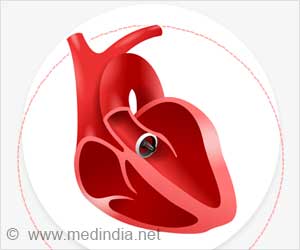A new research says that the use of common and readily available screening test called the ankle brachial index (ABI) could spot people with otherwise unsuspected heart risks.
A new research says that the use of common and readily available screening test called the ankle brachial index (ABI) could spot people with otherwise unsuspected heart risks.
The information was analyzed from the 1999-2004 National Health and Nutrition Examination Survey (NHANES), a nationally representative cross-sectional survey of the U.S. population for 6,292 men and women ages 40 and older without known history of heart disease, stroke, diabetes or atherosclerotic vascular disease-along with available data on standard cardiovascular risk factors and screening tests (like the ABI, which is a comparative blood pressure test).For the first time, researchers determined the prevalence of peripheral arterial disease (PAD) in a large population of women and men who were not considered at high risk for cardiovascular disease.
The researchers found that novel risk factors are abnormal in up to 45 percent of those not considered high risk for coronary heart events.
"This is significant news that can profoundly impact public health. If novel risk factors are shown to improve risk prediction, they could be very valuable because the prevalence of abnormal values is high in populations not known to have high risk," said Timothy P. Murphy, M.D., an interventional cardiologist and director of the Vascular Disease Research Center at Rhode Island Hospital in Providence.
"These simple tests-like ABI screening-have the potential to improve the accuracy of cardiovascular risk prediction and thereby have significant public health impact by helping identify people for intensive medical therapy and preventing heart attacks and strokes," said Murphy.
While 91 percent of the NHANES group was considered at low or intermediate risk of cardiovascular disease, according to Framingham criteria alone, almost 45 percent of them were found to have at least one of three conditions: an abnormal ABI or elevated plasma fibrinogen or elevated plasma C-reactive protein (CRP).
Advertisement
"There is also a good chance that ABI, which actually detects subclinical already-established atherosclerotic disease, may actually perform better in terms of risk prediction than fibrinogen or C-reactive protein because it may be more specific," Murphy said.
Advertisement
Source-ANI
ARU/L








